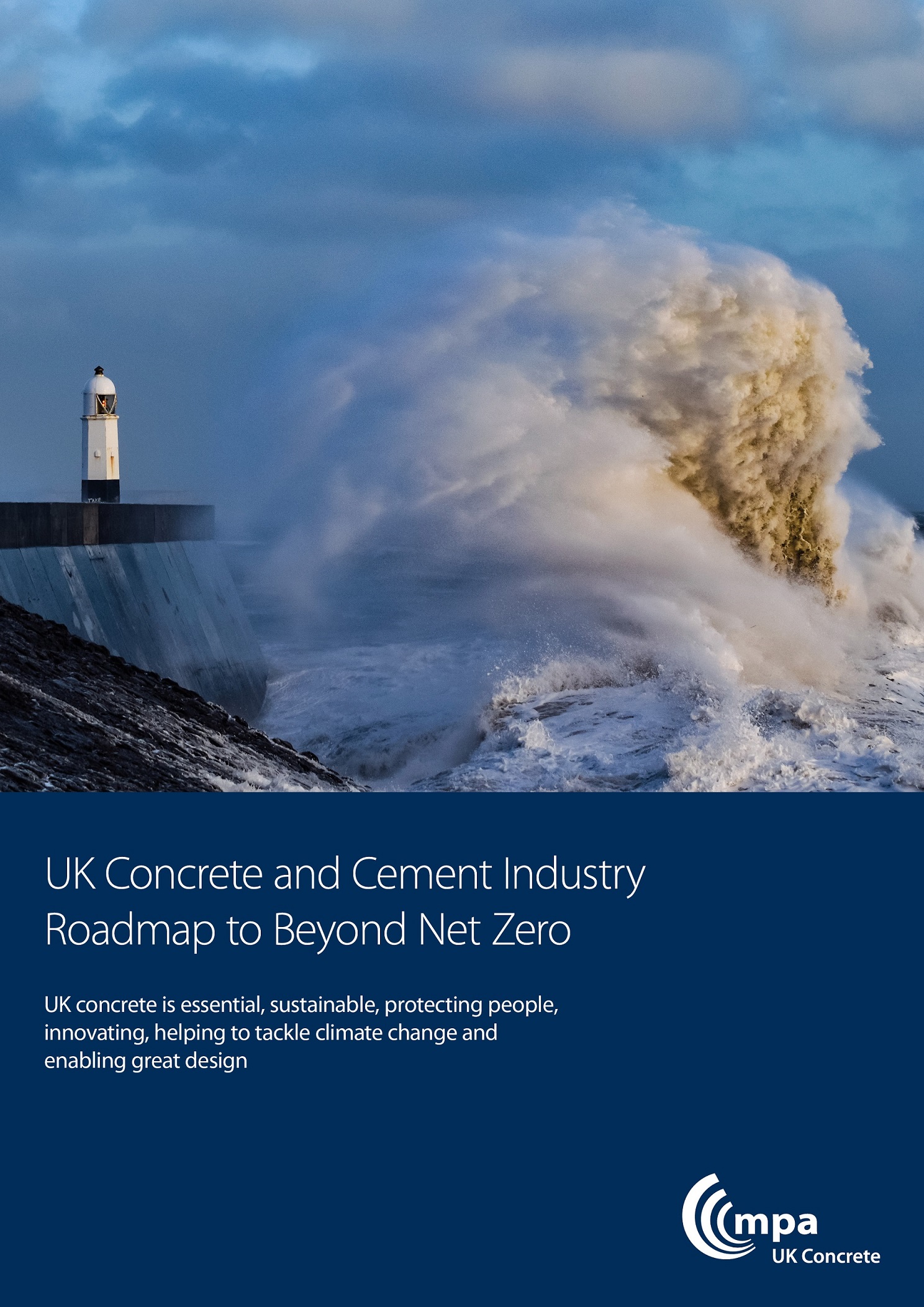
UK Concrete, part of the Mineral Products Association (MPA), is launching the roadmap and has identified that net zero can be met through decarbonised electricity and transport networks, fuel switching, greater use of low-carbon cements and concretes as well as carbon capture, usage or storage (CCUS) technology for cement manufacture.
The ‘Roadmap to Beyond Net Zero’ calculates the potential of each technology and the carbon savings which can be achieved.
UK Concrete says that CCUS technology is vital to delivering net zero manufacturing and according to its roadmap will deliver 61% of the required carbon savings. It adds that a net negative industry by 2050 will be achieved by using the natural, in-use properties of concrete which include its ability to absorb carbon dioxide during use, and the benefit of using the thermal properties of concrete in buildings and structures to reduce operational emissions.
The concrete and cement industry has already taken early joint action and due to investment in fuel switching, changes in product formulation, and energy efficiency including plant rationalisation, its direct and indirect emissions are 53% lower than 1990 - which UK Concrete says is decarbonising faster than the UK economy as a whole.
The MPA says it is building on this progress by currently undertaking demonstrations of hydrogen and plasma technology, which are being partly funded by the Department for Business, Energy and Industrial Strategy (BEIS). The demonstrations are intended to show the potential of these technologies to reduce carbon emissions through fuel switching from fossil fuels in cement and lime production.
The industry is now calling on Government for a robust financial support model including for the capital and operational costs of carbon capture by no later than 2021. This would ensure the technology can be developed, deployed and become an investable proposition in the 2030s.
MPA chief executive Nigel Jackson commented: “We have already made significant progress to reduce carbon emissions but are under no illusion about the scale of the net zero challenge. Achieving this will require the wholesale decarbonisation of all aspects of concrete and cement production, supply and use. The concrete and cement industry as one sector alone cannot deliver net zero and we will only be able to go beyond net zero with concerted support from Government, as well as with significant changes across the wider construction, energy and transportation sectors."
Jackson added that, critically, the roadmap will be delivered without offsetting emissions or offshoring production facilities. He said that net zero should be achieved by reducing emissions from the construction materials manufactured in the UK, rather than by ‘carbon leakage’ where UK production is replaced with imports that simply moves the emissions responsibility abroad.
"The aim should be to retain jobs and economic value in the UK whilst ensuring that the UK takes responsibility for the emissions it creates,” said Jackson.
Chris Stark, chief executive of the committee on climate change (The UK government's official climate change advisor), said that decarbonising emissions from concrete and cement is one of the key challenges for getting to net zero, with knock-on effects for helping to reduce emissions from the built environment.
"Net zero is a fundamental goal, requiring bold leadership from Government and from commerce – I highly commend this initiative,” said Stark.
UK Concrete says that the country's concrete and cement sectors account for 1.5% of UK carbon dioxide emissions, five times lower than the global average where cement and concrete account for 7% of emissions.
UK carbon dioxide emissions from concrete and cement were 7.3 million tonnes in 2018; around 4.4 million tonnes of this was ‘process emissions’ from clinker production, 2.2 million tonnes from fuel combustion and the remainder from electricity use and transport.
UK Concrete’s roadmap is based on the UK’s current level of production of cementitious materials, which was 11.8 million tonnes in 2018, and a concrete production of 90 million tonnes in 2018.














